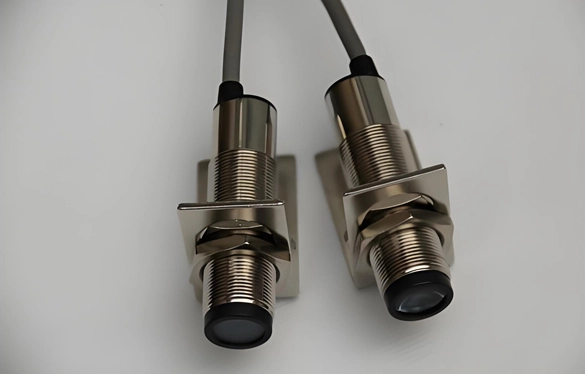In modern industrial automation, robotics, and safety monitoring, sensors play an essential and irreplaceable role as core sensing components. Among various types, the capacitive proximity sensor is widely adopted due to its fast response, high precision, and strong resistance to electromagnetic interference.
The working principle of a capacitive proximity sensor is based on the charge storage and electric field variation characteristics of a capacitor. It typically consists of a fixed electrode and a sensing electrode, forming a small air gap. When an object approaches the sensing electrode, it alters the electric field distribution between the electrodes, resulting in a change in the capacitance value.
When there is no target object near the sensor, the capacitance between the fixed and sensing electrodes remains at a stable baseline. As soon as a target object enters the sensing range, a new capacitive coupling is formed between its surface and the sensing electrode. This additional capacitance works in parallel with the existing one, increasing the total capacitance in the circuit.
Inside the capacitive proximity sensor, there is usually an oscillator circuit and a detection circuit. The oscillator generates a high-frequency signal that is applied across the electrodes. When the capacitance changes due to the presence of a nearby object, it affects the frequency or amplitude of the oscillation. The detection circuit monitors these changes and converts them into recognizable output signals, such as a switch signal or an analog signal. This enables the sensor to detect the presence and position of an object without any physical contact.
The capacitive proximity sensor is used in a variety of fields due to its versatility and precision.
Proximity Detection
The capacitive proximity sensor is ideal for detecting the presence of objects without physical contact. This makes it suitable for applications in assembly lines, robotics, and safety systems. On assembly lines, it helps verify whether parts are correctly positioned or installed. In robotics, it allows a robot to sense its environment and avoid collisions. In security systems, it can detect intrusions and trigger alarms.
Position and Displacement Measurement
By monitoring how capacitance changes as an object moves closer to or farther from the sensor, the capacitive proximity sensor can be used to measure position and displacement with high accuracy. This application is common in precision machining, automated manufacturing systems, and aerospace engineering.
Level Sensing
The capacitive proximity sensor can also detect changes in liquid levels within a container by sensing the variation in capacitance as the liquid rises or falls. This is especially useful in industries such as food and beverage, pharmaceuticals, and chemical processing, where precise control of liquid levels is critical.
Other Applications
The capacitive proximity sensor can also be used to detect fine metal wires, contaminants on plastic or glass surfaces, or objects inside sealed packaging such as bags of food. It is effective in indirect detection of liquids and powders, and in direct detection of solids, liquids, and powders. It is also used to detect the surface level of substances like water or powdered materials.
The capacitive proximity sensor is an advanced sensing device that plays a vital role in industrial automation, robotics, and security monitoring. Its functionality is based on the fundamental principles of capacitive charge and electric field variation, allowing it to detect the presence and position of target objects with no physical contact. Thanks to its rapid response, high precision, and excellent interference resistance, it is widely applied in proximity detection, displacement measurement, level sensing, and various other scenarios. As technology continues to evolve, the capacitive proximity sensor is expected to unlock even greater potential across a growing number of industries.
